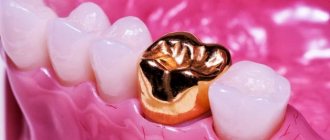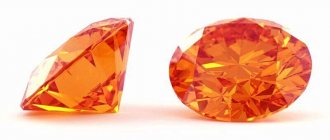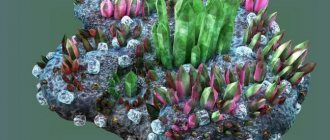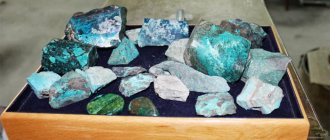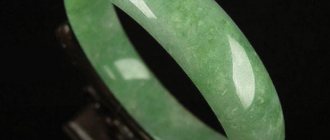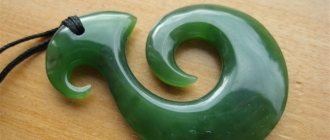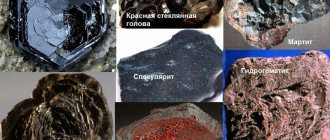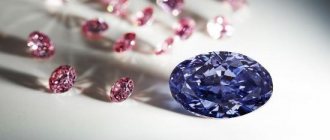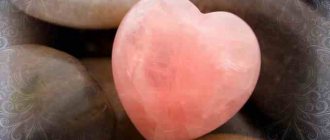Since ancient times, stones have been endowed by people with magical properties. It was believed that the one who had the most precious and natural stones was truly rich. Over time, this has not gone away. And today, one who has a large number of magnificent multi-colored shining stones is a rich person.
However, people have also found use for natural stones. In skillful hands, each miracle of rock takes on a truly majestic appearance. But what is this subject from a scientific point of view? Is a stone a substance or a body? What does it consist of and what varieties is it presented in, how is it used by humans and what names does it bear? Let's try to figure it out.
Is a stone a substance or a body?
To answer this question, one must generally decide what bodies and substances are? Teachers from the fifth grade answer this question to children in their natural history lessons.
All objects of living and inanimate nature are usually called bodies. While substances are precisely the material from which bodies are made. These concepts are closely interrelated. If you build a logical chain, it will take approximately the following form: bodies - substances - molecules - atoms - smaller structures within the nucleus.
By their nature, stones are products of rocks, pieces and fragments from them. Therefore, when answering the question: “Is a stone a substance or a body?” - you should pay attention to this fact. It should also be taken into account that the chemical nature of rocks is different, the substances from which they are composed are specific and not the same. Hence the conclusion: stones are both substances and bodies from the points of view of different sciences.
Advantages
The main advantages of artificial cladding are as follows:
- low price when manufacturing a product or purchasing a ready-made product;
- choice of color - when making the material yourself, you can choose an almost ideal palette;
- fewer flaws, defects, inclusions that are characteristic of natural materials;
- due to the denser surface, care is reduced to removing dust or cleaning with a damp cloth;
- delivery is significantly cheaper, since the location of the plant or even independent production eliminates long transportation from the production site;
- if additional quantity of material is required, then you can purchase any volume of exactly the same stone;
- simplified repair;
- the weight of stone blocks with the same texture is approximately 1.4-1.5 times lower than their natural counterpart, which greatly facilitates installation;
- an artificially aged surface will serve well for many years, but for a natural product it means rapid destruction;
- installation is also simplified due to additional elements.
Classification of stones
This question generally remained open for a long time, since different scientists interpreted it each in their own way. As a result, the classification of stones was given only much later, already in the 20th century. Each country has its own. For Russia, the system proposed by V. Ya. Kievlenko (1973) is considered acceptable.
- Precious, or jewelry. Examples: ruby, sapphire, emerald, diamond, beryl, alexandrite, opal, zircon, moonstone, aquamarine, topaz, tourmaline, peridon, amethyst, turquoise, chrysoprase, almandine, rosolite, spinel, citrine, demantoid, spodunite, pyrope. All of them are divided into stones of I, II, III and IV orders.
- Semi-precious, or jewelry-ornamental. Examples: rock crystal, agate, chalcedony, amber, hematite, cahonite, rauchtopaz, amazonite, labradorite, spar, quartz, rhodonite, common opal, beloporite, heliotrope, rose quartz. All are divided into elements of the first and second order.
- Ornamental. Examples: marble, fluorite, selinite, quartzite, granite, jasper, agalmatolite, ganite, onyx, jaspleite, listvenite, jet, obsidian, onyx.
In a broader sense, all types of stones can be reduced to three groups:
- natural;
- artificial;
- synthetic.
This classification is more chemical, since artificial and synthetic samples are obtained by laboratory methods.
The classes of stones that were listed above also have certain divisions within themselves. For example, natural ones have their own special classification and names.
How to distinguish natural rubies, sapphires, emeralds from synthetic ones?
Methodology “ How to distinguish natural rubies, sapphires, emeralds from synthetic ones? "
Look, there is no difference between synthetic and natural gemstones. They have the same chemical composition, crystal structure and properties. The only way to tell them apart is to look at the internal inclusions or clarity characteristics. The price difference between natural gemstones and synthetic ones is significant. A 5-carat natural ruby, sapphire, emerald will cost more than $5,000; 5ct Synthetic Gemstone - Under $5.00.
The true story of buying a synthetic ruby instead of a natural one
A friend of mine visited Myanmar and bought a ruby there. This story could happen anywhere in the world. Especially in countries where consumer protection is insufficient.
Tomchai was visiting Myanmar with a tour group. He enjoyed the holiday as he didn't have to plan anything during the trip. Towards the end of the tour, the guide took them to a "big" retail jewelry store. In the store, Tomchai saw some amazing gems and jewelry.
He especially liked the 5-carat ruby. It looked amazing and the price was cheaper than similar stones in Bangkok. Tomchai also knew that Myanmar was famous for its premium gemstones, especially rubies. And he thought: why not buy this wonderful stone here?
He asked a few questions and was impressed by the size of the store and its decor. Tomchai was confident that the seller he was dealing with was trustworthy. How can anything happen on such a successful trip?
Tomchai decided to buy a ruby and received a certificate from the store. This further confirmed to him that he had made the right choice. He brought the ruby to Bangkok and gave it to me so I could set the stone in his new ring.
Handing me the ruby, he asked me to check the stone and evaluate it. Using my office microscope, I examined the stone. Almost immediately I saw curved growth lines. This is the fastest way to identify a synthetic flame fusion ruby.
Unfortunately, I had to tell my friend some bad news. Tomchai was very angry, because he gave his hard-earned money for a synthetic ruby. The seller deceived him.
Why is it so important to distinguish synthetics (or imitation) from natural gemstones?
Separating natural stones from synthetic (or imitation) stones is certainly a very important skill. We gemologists must learn to tell the difference as this is essential when buying or selling any gemstone. Without this basic knowledge, you can quickly lose money and damage your reputation.
Additionally, as soon as you learn that a gemstone is synthetic or treated, it is important to report it. Otherwise, the consequences can be very serious. There is no excuse for lack of knowledge or silence.
Synthetics vs. Imitation: Definition
In this post I will summarize what we as gemologists test to tell the difference between natural and synthetic or imitation material.
To begin with, I offer definitions of synthetics and imitation gemstones.
Synthetic gemstones are made in a laboratory (or artificially). They have the same chemical composition, crystal structure and properties as natural gemstones.
Imitation can be either natural or artificial. These stones just look like precious ones. In fact, their chemical composition and properties are completely different from the gemstones they imitate.
Let's talk about the differences between synthetic, unheat-treated, heat-treated, and glass-filled rubies.
Ruby classification:
(A) Synthetic flame-fusion cabochon-cut ruby.
(B) Untreated and untreated natural Mozambican ruby.
(C) Heat treated natural Burmese ruby.
(D) Glass composite (or glass filled) ruby.
There is a misconception: the purer the stone, the higher the likelihood that it is synthetic. In fact, the only way to determine whether a ruby is natural or synthetic is to examine it under a microscope for inclusions.
Synthetic gemstones
The best way to determine if a gemstone is synthetic is to check its clarity characteristics. This will help determine the method by which it was made. Below I will outline the most typical production methods.
How to detect
Synthetic rubies. It is easy to detect curved growth lines in a red colored synthetic ruby using the darkfield lighting setting. Darkfield illumination is the normal setting on a gem microscope or handheld darkfield magnifier.
Synthetic blue sapphires. Difficult to detect under normal dark field lighting because the curved growth lines are blue in color. Using diffused light can help. Create diffuse lighting by placing a translucent filter between the stone and the light. A translucent filter can be white plastic, a sheet of paper, or plain cloth.
Synthetic yellow or orange sapphires. Difficult to see through a microscope as the crystal literally glows yellow, preventing the faint yellow growth lines from being seen. A blue filter works best in this situation. A blue filter can be a transparent sheet of blue paper or blue plastic.
Synthetic ruby flame- fusion
Curved growth lines are a classic feature of flame-fusion rubies,
Gas bubbles are a common characteristic of these rubies.
Synthetic flame-fusion rubies are the most common type of synthetic. They are made from synthetic corundum (ruby or sapphire family) or spinel.
In the flame-fusion process, powdered chemicals are subjected to high-temperature heating. Melting, they fall onto a rotating pedestal. They then crystallize and form an elongated cylindrical synthetic crystal called a boule. This boule is then cut into several individual synthetic gemstones.
Thanks to this process, it is easy to distinguish synthetic gemstones from natural ones. They have curved stripes of color or parallel curved lines called curved growth lines. While natural gemstones have straight or angular growth lines.
Flux-grown or hydrothermal synthetics
Submerged arc cultivation: visual characteristics
Rough, fingerprint-like inclusions, whitish, in high relief.
Natural gemstones have teardrop-shaped fingerprint-like inclusions that are less rough than those found in submerged synthetics.
Thin veils.
Tiny droplets of a pattern called "Rain".
Parallel, uniform growth planes, sometimes called the “Venetian curtain effect.”
Platinum crystals, often in the form of triangular or hexagonal plates.
Colorless, low-relief crystals of phenacite or chrysoberyl.
Hydrothermal Growing: Visual Characteristics
Fingerprints and veils.
Note: Additional time and attention is required for identification as the stones appear similar to natural gemstones.
Cheworn-type growth zones or wavy growth planes.
Phenacite or chrysoberyl crystals, gold rods and plates.
The white inclusion particles scatter randomly or form a “comet tail.”
Inclusions in the form of “studs” or “rays”.
Submerged arc growth or hydrothermal growth are solution-based processes. They tend to be slower and much more expensive compared to synthetics created through a melting process.
Growing under flux. Powdered ingredients are mixed with flux in a heat-resistant container called a crucible. A very high temperature is then applied. In this way, the flux melts and dissolves the powdered ingredients to form a chemical solution. As the solution cools, a synthetic crystal forms.
Hydrothermal cultivation. Seed crystals and crushed chemical compounds are placed in water and heated under high pressure. When chemicals dissolve, they float to the top. Then, as the ingredients cool, they begin to cluster around the seed crystals. This creates a large synthetic crystal.
Submerged arc growing is commonly used to produce the more expensive synthetic corundum, the base for rubies and sapphires.
Hydrothermal growth is a popular method for producing synthetic beryl, the basis for emeralds.
Inclusions in emeralds under a microscope
There are processes for creating other synthetic gemstones. But for this post, I will only focus on rubies, sapphires and emeralds.
Inclusions in ruby under a microscope
Imitation gemstones
As previously defined, imitation gemstones are either natural or man-made. They replace (or imitate) natural stones. A variety of materials are used to imitate precious stones. The most common of them is glass.
Glass can imitate precious stones of all colors, as well as colorless ones:
a) rubies
b) sapphires
c) emeralds
d) diamonds
e) any other precious stones - transparent or opaque.
Appearance is often enough to separate imitation glass from gemstones. Precious stones are much harder than glass . The edges of glass edges are usually more rounded, and the edges can sometimes be concave.
A glass gemstone is also most often cast rather than cut. Therefore, its surface may have pits and irregularities, reminiscent of the peel of an orange, as a result of the casting process.
Glass also feels "warm" to the touch because it does not conduct heat like most gemstones.
How to detect glass
Swirl marks are also characteristic of glass with a linear structure. These patterns are actually layers of slightly different composition. The reason is the ingredients are not completely mixed. Swirl marks may appear curved. But they are rougher and less regular than the growth lines in synthetic flame-fusion rubies.
Glass in ruby
Stones from a chemical point of view
As already noted, by their nature the elements in question are rocks. Therefore, from a chemical point of view, a stone is a substance. The composition is usually determined by a combination of various metal oxides and their salts.
For example, the chemical composition of the well-known emerald and ruby is almost the same - aluminum oxide AL2O3. The color varies due to different impurities of other elements and light absorption capacity.
We can name several chemical groups of compounds that underlie the composition of all natural, including precious, stones:
- native elements (diamond - C);
- halides;
- sulfides;
- oxides;
- phosphates;
- borates;
- sulfates;
- feldspars;
- scapolites;
- sadolites;
- carbonates;
- silicates;
- grenades.
Each group has its own types of stones, numbering in hundreds of varieties. They can differ not only in composition, but also in color, shape, size, transparency, and density.
How did granite come about?
It is generally accepted that there are two natural ways by which this natural stone was formed. It could have arisen from molten magma (solidified volcanic lava). Deep in the earth's crust, magma slowly cools and turns into a fossilized structure, in which granite grains of different sizes crystallize over millions of years. It is no coincidence that its name itself comes from the Latin word “granum”, which means “grain”.
Natural stone granite is formed in nature in another way. Sedimentary rock, as well as clay-like sand and various types of stones, were gradually displaced through tectonic processes into the depths of the earth's crust. There, under the influence of high temperatures and pressure, substances melted and a process such as granitization .
Most granite formation occurs in so-called collision areas. Two continental plates collide with each other, causing an increase in the layer of crust on the continent. Many scientists believe that it is as a result of the thickening of the collision layers of the crust that layers of granite melt appear - at a depth of 10 to 20 km. This phenomenon is called granitic magmatism . It is most typical for Andean batholiths, as well as for island arcs.
Physical properties
From the point of view of the science of physics, a stone is a body. This means that its properties are characteristic, as for other similar objects: mass, melting and boiling points, density, color, taste, smell, etc.
However, everyone knows that a significant portion of stones have no taste, no smell, and are not capable of melting, but only crushing. Their colors are so varied that it is simply impossible to fit this indicator into a general framework. The palette of radiance of precious and semi-precious stones is complete: from black and white to bright blue, red, green, yellow and purple shades.
In general, we can distinguish several main groups of physical characteristics of stones, both natural and artificial (including precious ones).
- Strength and wear resistance. Based on this indicator, we can distinguish between strong (granite), medium (marble) and low strength (tuff) samples.
- Density. Corresponds to the previous indicator. They are divided into heavy - more than 2200 kg/m3 and light - less than this figure.
- Water absorption capacity, which is determined by the porosity of the structure.
- Acid resistance. The most resistant are granite and limestone. Marble collapses quite easily, as it enters into a chemical reaction with acids.
Thus, we can conclude that a stone is a substance or body of a natural nature, distinguished by a number of physical and chemical characteristics and of great practical importance in people’s lives.
Natural stones
Of course, there are too many of them to cover everything in a description. But we will try to consider the most common ones, those that are used by humans most often.
Any natural stone has a very beautiful and noble appearance. The photo of Stonehenge confirms this perfectly. Even though such samples do not have bright colors and radiance, they amaze with their majesty and splendor.
Varieties
There are several popular examples of natural stones that are used by people in landscape design and construction due to their strength, beauty and environmental friendliness.
- Marble, which can be of different shades and patterns (layered or spotted). Since ancient times it has been used as a stone for architectural structures. From a chemical point of view, it is calcium carbonate CaCO3.
- Granite. It is a material for finishing floors, walls, cladding buildings, creating incredible works of art (monuments, monuments, etc.). From a chemical point of view, it is a combination of feldspars, quartz and dark-colored minerals.
- Sandstone. It is used by people for paving sidewalks, building stairs, and laying foundations. Used since ancient times. Chemical composition: quartz and feldspars.
- Travertine. An extremely dense and strong stone, surpassing marble in hardness. It also has good frost resistance. It is used in construction along with granite and marble. Composed of calcium carbonate minerals.
- Tuff. A beautiful porous stone, quite loose. Used for design of garden plots and cladding of buildings. Chemical nature - calcium carbonate, silicon compounds, volcanic ash and compacted lava.
- Jasper is a beautiful colored stone used for decorative finishes and jewelry. It is a mixture of silicon compounds and iron oxides.
There are also such common stones as slate, basalt, dolomite, limestone and others, which are widely used in construction and are generally used by humans. Natural stone, a photo of which can be seen in the article, is one of the most popular materials for interior decoration today.
Names of granite based on mineral composition
Depending on what the main mineral composition of granite is, different types of stones are called differently:
- not containing dark-colored minerals - alaskite ;
- with a low content of dark flowers - leucogranite ;
- biotite - if this mineral in granite is from 6 to 8%;
- if the stone contains biotite and muscovite at the same time - double-mica granite ;
- if the stone contains lithium mica, it is lithium fluoride granite ;
- with a high content of alkaline components - simply an alkaline type of granite ;
- a rare species consisting of orthoclase, quartz rocks and augite - pyroxene .
Artificial stones: classification
Such structures can be divided into four main groups:
- acrylic;
- polyester;
- quartz agglomerates;
- cast marble.
The main feature of each of them is that they are created artificially by man, and therefore are not found freely in nature. Their properties are not inferior to, and sometimes even superior to, those of natural samples.
The main areas of use are the manufacture of countertops, sinks, laying out walls, floors, window sills and other surfaces.
Stones in water - types and properties
Sea stones are an important decorative element for aquariums, bathrooms, and room decoration in the appropriate style. They are very beautiful, varied in shape, size and color, and always attract attention.
What types of such structures exist?
- Shell rock. A natural stone formed over centuries from lime deposits and shell fragments of aquatic inhabitants of the oceans and seas. It has a beautiful milky shade, characteristics suitable for use in construction. Widely used in interior design decoration.
- Pearl. It is classified as a natural sea stone because it is a product of the vital activity of shell mollusks. Used in jewelry, it is highly valued for its strength, beauty and durability.
- Corals. You can also call them sea stones, because over time they turn into very durable structures formed by calcareous minerals, quartz and waste products of ocean inhabitants - polyps. Very varied in color, they are the most spectacular elements in decorating aquariums. Used in jewelry.
That is, sea stones are products of animal origin, formed under the influence of salty sea water and living organisms.
